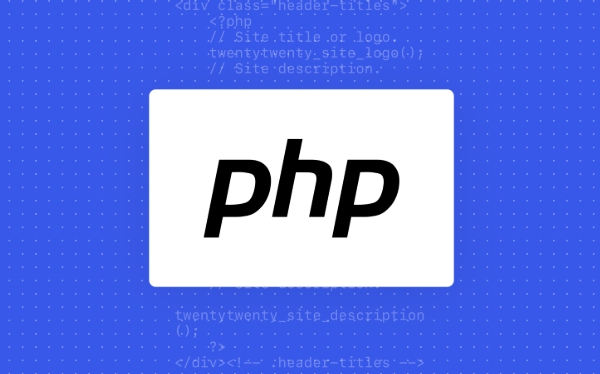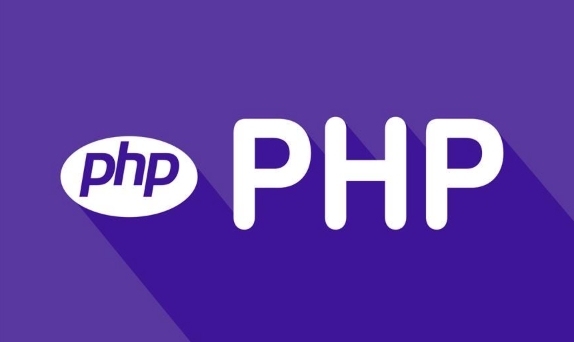The trim() function of PHP can be used to remove whitespace characters or other specified characters at the beginning and end of a string. 1. By default, trim() removes spaces, tabs (\t), line breaks (\n), carriage return (\r), empty bytes (\0), and vertical tabs (\x0B); for example, trim(" \n\tHello World!\r\n ") outputs Hello World!. 2. You can specify the characters to be removed through the second parameter, such as trim("---Hello World!---", "-") to return Hello World!, and support multiple characters, such as trim("xxxyour-string-yyyx", "xy") to get your-string. 3. Notes include: character-by-character checking rather than overall matching, no need to escape ordinary characters, and no affecting multi-byte characters. 4. Common applications include: cleaning form input, processing CSV data, analyzing log files and cleaning before string splicing.

Sometimes when we process strings, we will encounter unwanted characters before and after, such as spaces, line breaks or other symbols. At this time, PHP's trim() function will be used to "cut out" these unnecessary content.

trim() is most commonly used to remove whitespace characters at the beginning and end of a string, but it actually supports removing other characters you specify.
How to use trim to remove default whitespace characters
PHP's trim() function will remove the following blank class characters by default:

- Spaces
- Tab characters (
\t) - Line breaks (
\n) - Carriage return character (
\r) - Null bytes (
\0) - Vertical tab character (
\x0B)
For example:
$str = " \n\tHello World!\r\n "; echo trim($str);
The output is:

Hello World!
This usage is very common, especially when processing user input, such as data read from a form or file, which may have many invisible blanks before and after, and it will be much cleaner after processing with trim() .
How to customize the characters to be removed
If you not only want to remove whitespace characters, but also want to delete some specific characters, such as quotes, commas or other symbols, you can specify them in the second parameter of trim() .
The syntax is like this:
trim(string $string, string $character_mask): string
For example:
$str = "--Hello World!---"; echo trim($str, "-");
The result is:
Hello World!
Note: trim() starts deleting from both sides until it encounters the first character not in $character_mask , and will not remove the middle ones.
You can pass multiple characters in, for example:
trim("xxxyour-string-yyyx", "xy"); This will remove the x and y at the beginning and end, and the result will become "your-string" .
Notes and FAQs
There are several small details that are easily overlooked when using trim() :
- The characters in the second parameter are "checked one by one" and do not match the entire string together.
- If you accidentally write
trim($str, "abc"), it will remove a, b, or c, instead of just removing the combination "abc". - Don't forget to escape special characters. For example, if you want to remove the slash
/, just write it in directly, but if you use regular expression-related functions, you should pay attention to the difference. - It has no effect on multi-byte characters such as Chinese, it is just a character at the byte level.
Give an example that is not right:
trim("abbaTestabb", "ab");
// The result is "Test"Because the first two abs are removed, the ending abs are also removed.
Practical application suggestions
- Form submission data cleaning:
trim($_POST['username'])can prevent users from accidentally entering the front and back spaces. - When processing CSV file contents, fields may have some weird symbols, and you can use
trim($field, "\"' ")to remove quotes and spaces. - In log analysis, invalid characters on the head and tail of each line of log are cleaned.
- String pre-stitching to avoid the appearance of unnecessary connection symbols.
Basically that's it. Although it is simple, it can save a lot of trouble if it is used well in the project.
The above is the detailed content of PHP trim characters from a string. For more information, please follow other related articles on the PHP Chinese website!

Hot AI Tools

Undress AI Tool
Undress images for free

Undresser.AI Undress
AI-powered app for creating realistic nude photos

AI Clothes Remover
Online AI tool for removing clothes from photos.

Clothoff.io
AI clothes remover

Video Face Swap
Swap faces in any video effortlessly with our completely free AI face swap tool!

Hot Article

Hot Tools

Notepad++7.3.1
Easy-to-use and free code editor

SublimeText3 Chinese version
Chinese version, very easy to use

Zend Studio 13.0.1
Powerful PHP integrated development environment

Dreamweaver CS6
Visual web development tools

SublimeText3 Mac version
God-level code editing software (SublimeText3)
 PHP calls AI intelligent voice assistant PHP voice interaction system construction
Jul 25, 2025 pm 08:45 PM
PHP calls AI intelligent voice assistant PHP voice interaction system construction
Jul 25, 2025 pm 08:45 PM
User voice input is captured and sent to the PHP backend through the MediaRecorder API of the front-end JavaScript; 2. PHP saves the audio as a temporary file and calls STTAPI (such as Google or Baidu voice recognition) to convert it into text; 3. PHP sends the text to an AI service (such as OpenAIGPT) to obtain intelligent reply; 4. PHP then calls TTSAPI (such as Baidu or Google voice synthesis) to convert the reply to a voice file; 5. PHP streams the voice file back to the front-end to play, completing interaction. The entire process is dominated by PHP to ensure seamless connection between all links.
 How to use PHP to build social sharing functions PHP sharing interface integration practice
Jul 25, 2025 pm 08:51 PM
How to use PHP to build social sharing functions PHP sharing interface integration practice
Jul 25, 2025 pm 08:51 PM
The core method of building social sharing functions in PHP is to dynamically generate sharing links that meet the requirements of each platform. 1. First get the current page or specified URL and article information; 2. Use urlencode to encode the parameters; 3. Splice and generate sharing links according to the protocols of each platform; 4. Display links on the front end for users to click and share; 5. Dynamically generate OG tags on the page to optimize sharing content display; 6. Be sure to escape user input to prevent XSS attacks. This method does not require complex authentication, has low maintenance costs, and is suitable for most content sharing needs.
 How to use PHP combined with AI to achieve text error correction PHP syntax detection and optimization
Jul 25, 2025 pm 08:57 PM
How to use PHP combined with AI to achieve text error correction PHP syntax detection and optimization
Jul 25, 2025 pm 08:57 PM
To realize text error correction and syntax optimization with AI, you need to follow the following steps: 1. Select a suitable AI model or API, such as Baidu, Tencent API or open source NLP library; 2. Call the API through PHP's curl or Guzzle and process the return results; 3. Display error correction information in the application and allow users to choose whether to adopt it; 4. Use php-l and PHP_CodeSniffer for syntax detection and code optimization; 5. Continuously collect feedback and update the model or rules to improve the effect. When choosing AIAPI, focus on evaluating accuracy, response speed, price and support for PHP. Code optimization should follow PSR specifications, use cache reasonably, avoid circular queries, review code regularly, and use X
 PHP creates a blog comment system to monetize PHP comment review and anti-brush strategy
Jul 25, 2025 pm 08:27 PM
PHP creates a blog comment system to monetize PHP comment review and anti-brush strategy
Jul 25, 2025 pm 08:27 PM
1. Maximizing the commercial value of the comment system requires combining native advertising precise delivery, user paid value-added services (such as uploading pictures, top-up comments), influence incentive mechanism based on comment quality, and compliance anonymous data insight monetization; 2. The audit strategy should adopt a combination of pre-audit dynamic keyword filtering and user reporting mechanisms, supplemented by comment quality rating to achieve content hierarchical exposure; 3. Anti-brushing requires the construction of multi-layer defense: reCAPTCHAv3 sensorless verification, Honeypot honeypot field recognition robot, IP and timestamp frequency limit prevents watering, and content pattern recognition marks suspicious comments, and continuously iterate to deal with attacks.
 How to use PHP to combine AI to generate image. PHP automatically generates art works
Jul 25, 2025 pm 07:21 PM
How to use PHP to combine AI to generate image. PHP automatically generates art works
Jul 25, 2025 pm 07:21 PM
PHP does not directly perform AI image processing, but integrates through APIs, because it is good at web development rather than computing-intensive tasks. API integration can achieve professional division of labor, reduce costs, and improve efficiency; 2. Integrating key technologies include using Guzzle or cURL to send HTTP requests, JSON data encoding and decoding, API key security authentication, asynchronous queue processing time-consuming tasks, robust error handling and retry mechanism, image storage and display; 3. Common challenges include API cost out of control, uncontrollable generation results, poor user experience, security risks and difficult data management. The response strategies are setting user quotas and caches, providing propt guidance and multi-picture selection, asynchronous notifications and progress prompts, key environment variable storage and content audit, and cloud storage.
 PHP realizes commodity inventory management and monetization PHP inventory synchronization and alarm mechanism
Jul 25, 2025 pm 08:30 PM
PHP realizes commodity inventory management and monetization PHP inventory synchronization and alarm mechanism
Jul 25, 2025 pm 08:30 PM
PHP ensures inventory deduction atomicity through database transactions and FORUPDATE row locks to prevent high concurrent overselling; 2. Multi-platform inventory consistency depends on centralized management and event-driven synchronization, combining API/Webhook notifications and message queues to ensure reliable data transmission; 3. The alarm mechanism should set low inventory, zero/negative inventory, unsalable sales, replenishment cycles and abnormal fluctuations strategies in different scenarios, and select DingTalk, SMS or Email Responsible Persons according to the urgency, and the alarm information must be complete and clear to achieve business adaptation and rapid response.
 Beyond the LAMP Stack: PHP's Role in Modern Enterprise Architecture
Jul 27, 2025 am 04:31 AM
Beyond the LAMP Stack: PHP's Role in Modern Enterprise Architecture
Jul 27, 2025 am 04:31 AM
PHPisstillrelevantinmodernenterpriseenvironments.1.ModernPHP(7.xand8.x)offersperformancegains,stricttyping,JITcompilation,andmodernsyntax,makingitsuitableforlarge-scaleapplications.2.PHPintegrateseffectivelyinhybridarchitectures,servingasanAPIgateway
 How to build a PHP Nginx environment with MacOS to configure the combination of Nginx and PHP services
Jul 25, 2025 pm 08:24 PM
How to build a PHP Nginx environment with MacOS to configure the combination of Nginx and PHP services
Jul 25, 2025 pm 08:24 PM
The core role of Homebrew in the construction of Mac environment is to simplify software installation and management. 1. Homebrew automatically handles dependencies and encapsulates complex compilation and installation processes into simple commands; 2. Provides a unified software package ecosystem to ensure the standardization of software installation location and configuration; 3. Integrates service management functions, and can easily start and stop services through brewservices; 4. Convenient software upgrade and maintenance, and improves system security and functionality.






